Mark Sisson's Blog, page 253
August 6, 2015
A Free Jar of Primal Kitchen Mayo for You
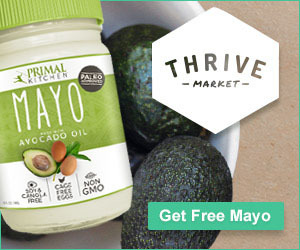 I’ve got another sweet deal for you from Thrive Market: become a new member and get a free full-sized jar of Primal Kitchen™ Mayo. Just pay S&H of $1.95. If you’re an existing member, don’t worry. I wheel and dealed a perk out of Thrive Market for you too. Click here and you’ll get an extra 10% off your next order.
I’ve got another sweet deal for you from Thrive Market: become a new member and get a free full-sized jar of Primal Kitchen™ Mayo. Just pay S&H of $1.95. If you’re an existing member, don’t worry. I wheel and dealed a perk out of Thrive Market for you too. Click here and you’ll get an extra 10% off your next order.
Primal Kitchen Mayo launched just 6 months ago and the reviews have been outstanding. After all, where would tuna salad be without mayonnaise and relish to hold it together? What’s a burger without that creamy special sauce? Even grilled artichokes are made better by a simple garlic aioli. Mayonnaise is more crucial to your meals than you might realize. But the conventional, mass-produced stuff is full of canola and soybean oils, not to mention laden with preservatives and added sugars to “improve taste.”
I dealt with the mayo dilemma by making homemade mayo full of nothing but pure and natural ingredients, and after experimenting with different recipes I found perfection with Primal Kitchen Mayo. Condiments seem to be a stumbling block for healthy eating, and I didn’t want to just keep my condiment creation to myself and immediate family and friends. So I decided to package my paleo-friendly mayonnaise and share it with health conscious folks like you.
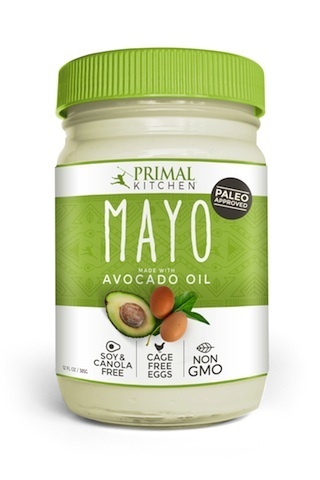 Every paleo foodie wants a good mayonnaise, but making your own mayo from scratch is both inconvenient and time-consuming, as I discovered personally. That’s why Primal Mayo is the holy grail of condiments. Because every dollop of this mayo is full of good fats, phytonutrients, and other antioxidants, you can use it lavishly—not sparingly—to upgrade the flavor and nutritional profile of your meal.
Every paleo foodie wants a good mayonnaise, but making your own mayo from scratch is both inconvenient and time-consuming, as I discovered personally. That’s why Primal Mayo is the holy grail of condiments. Because every dollop of this mayo is full of good fats, phytonutrients, and other antioxidants, you can use it lavishly—not sparingly—to upgrade the flavor and nutritional profile of your meal.
Here are just a few of the features that make Primal Kitchen Mayo so special:
It’s the only mayo in existence made from nutrient-dense avocado oil
Made from cage-free organic eggs and egg yolks
Made from vinegar sourced from non-GMO beets
Locally produced in Southern California
Free of dairy, sugar, high fructose corn syrup, and gluten
Compatible with gluten-free, low-carb diets of all kinds
Made from only five of the highest quality ingredients—and you can pronounce all of them
Plus, my avocado oil-based mayonnaise is super versatile. I use it in everything from homemade ranch or Caesar dressing, to tuna or chicken salads, to fresh dips and sauces.
Not an avocado oil convert yet? Let’s break down some of the fruit’s health benefits:
It’s rich in heart healthy monounsaturated fats, primarily oleic acid (the good stuff in olive oil)
It’s packed with bioavailable carotenoids (research has shown that avocado or avocado oil increased the absorption of carotenoids in a meal anywhere from 2.6 times to 15.3 times depending on the carotenoid)
It’s rich in potassium, choline, lutein, zeaxanthin, magnesium, folate, glutathione, and phytosterols
It’s concentrated with a desirable antioxidant profile
I want to make sure your tastebuds melt with my mayo, so I partnered with Thrive Market to give away a full-sized jar with every new membership, and give existing Market members a 10% off loyalty discount. Just follow this link for your FREE jar of Primal Kitchen’s paleo-friendly avocado oil mayonnaise (all you have to do is pay the $1.95 shipping fee) or your 10% off coupon. This offer expires on August 12, 2015. I have a feeling the jars will go quick so click away!
P.S. Thrive Market currently ships to all residential and commercials addresses in the Contiguous U.S. They do not currently ship to P.O. Boxes, Alaska, Hawaii, Puerto Rico, or Canada, but hope to do so in the near future.




August 5, 2015
How Important Is Consistency in Fitness?
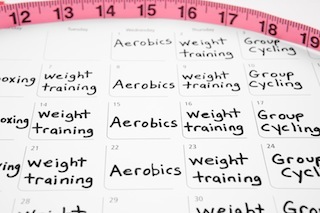 Time to take an informal poll. Who here fits in two strength training sessions, 1-2 sprint/interval sessions and 3-5 hours of walking or low level cardio on top of ample play time – every single week? I’m betting there’s still a lot of hands raised in this crowd, but I’m going to wager I lost quite a number as the list went on. In an ideal world with a perfect schedule, we’d all consistently reach these goals. The best results come from this general protocol. That said, this level of regularity is probably the exception rather than the rule if you’re talking about the long-term – month after month, year after year. And, yet, plenty of us are in great shape – even if we didn’t always fit in the above full regimen. Hmm… Maybe the concept of consistency is more nuanced than we normally give it credit for.
Time to take an informal poll. Who here fits in two strength training sessions, 1-2 sprint/interval sessions and 3-5 hours of walking or low level cardio on top of ample play time – every single week? I’m betting there’s still a lot of hands raised in this crowd, but I’m going to wager I lost quite a number as the list went on. In an ideal world with a perfect schedule, we’d all consistently reach these goals. The best results come from this general protocol. That said, this level of regularity is probably the exception rather than the rule if you’re talking about the long-term – month after month, year after year. And, yet, plenty of us are in great shape – even if we didn’t always fit in the above full regimen. Hmm… Maybe the concept of consistency is more nuanced than we normally give it credit for.
The fact is, there are a lot of legitimate reasons to skip workouts now and then. You’re sick. Your kids are sick (and it’s the kind where there’s really no getting away). A minor catastrophe at work keeps you (long) after hours. You overdid it during your last workout or are paying for a weekend warrior stint that pushed you far beyond your comfort zone. You spent weeks dedicated to P90X or some other high octane routine, and now you’re totally burned out on it. You joined a gym and became a regular in a couple of classes, but now you’re not feeling it anymore. Maybe you tend to jump from thing to thing, experimenting with equipments and trends here and there. Like most people, you go through periods of consistency, even intense dedication, and then you settle out into phases of rest or even brief recess.
However erratic this might sound to some people, I’d venture to say our ancestors lived similarly changeable patterns of activity. There were in many regions, after all, seasons of migration for humans and for animals. With those migrations came hunting spurts as well as times of intense work on new shelters or winter preparations. A hundred different factors might have slanted Grok’s activity from one end of the spectrum to the other. Yet, it all evened out at some point.
Whatever the varied reasons behind our missed workouts in the present day, there’s this essential truth. The body requires adequate recovery from physical exertion to maximize its gains. Heavy exertion, after all, creates muscle damage, and the body then needs to repair that damage. Fitness, as it happens, accrues during recovery – not during the workout. Generally speaking, the harder you worked out, the longer you need to recover.
Working out manically – whether it’s spending hours every day on chronic cardio or not observing smart recovery time between lifting or other strength training sessions – won’t give you the results you deserve, and it’s frankly a waste of time and effort.
The fact is, life happens and sometimes the body is just tired. Pushing it isn’t going to help – especially if you’re low on mental or physical reserves.
If you’ve had poor sleep lately, for example, you’ll almost inevitably have a less productive workout. While light to moderate activity may help you modulate your energy and even support better sleep, intensive exercise probably won’t do you any favors. Not only are you more prone to injuries, but the added strain on an already off-kilter system may worsen the stress of sleep deprivation.
Even excessive mental stress can likewise alter your body’s response to exercise. Subjects in one study who were undergoing significant life stress events or perceived emotional stress showed impaired recovery following a heavy resistance training protocol. Their actual recovery of both muscular function as well as their recovery from fatigue and soreness took a hit for 96 hours (nearly 4 days) following their heavy exertion compared to those without measures of significant perceived or life stress events. This likely isn’t news to anyone who’s experience in the gym shifted in the face of personal crisis or even considerable work or family related stress.
Sure, the fitter you are, the more you have before you’re truly out of basic shape, but those working at a high maintenance performance level will see dips in those performance measures pretty quickly. For most people, however, two to four weeks is enough for losses to begin accumulating, and VO2 max (a key measure for cardiovascular fitness) tends to recede first with muscle mass losses on the heels. In one small study, non-exercising but otherwise “healthy” young men reduced activity from roughly 10,500 steps to around 1300. Two weeks later, their VO2 max had declined by 7% as did their insulin sensitivity and lean leg mass.
When we’re talking about consistency, however, we’re not talking about long hiatuses. We’re talking days here and there – with more workouts made than missed. Sometimes, we curtail rather than abandon our efforts as we navigate a gap in motivation or look for a new interest that will renew our dedication. And yet we’re still soundly on the fitness path.
Perhaps the most illuminating point about consistency can be found in looking more closely at the word itself. Consistency doesn’t just suggest a regular frequency per se but a general steadiness, an unfluctuating focus.
Consistency is an aspect – and tool – of discipline, but it’s not the core feature. Some people can stick to a routine like nobody’s business. Others would be rebelling outright if told they had to “do” their fitness in any kind of uniform way – whether it be the schedule or type of exercise they pursue. Nonetheless, over the course of a given time, they end up exercising a lot – as much or maybe even more than someone who makes a formula out of it. One way isn’t necessarily better than another.
In keeping with that, let’s pull back in our wordsmithing for the day and look at the concept of “consistent with.” Synonymous with it are phrases like “compatible with,” “congruent with,” “in tune with.” Here’s where we get to the meat of the matter.
Commitment is the real center here. If we’re committed, we’ll do what’s necessary to maintain if not progress our fitness – however loosely (and sometimes inconsistently) that actually happens. The heart of commitment is a steady focus. Workout inconsistencies aren’t necessarily undermining to that principle – or how strongly it operates in our fitness.
How about leaving some room for recalibration as well as real life? What would happen if we give up the pursuit-withdrawal chase of perfection and settle into the experience of self-trust – a value put into practice with the likes of daily or weekly minimums, self-care, health integrity, etc.?
How many of us then would be raising our hands – and feeling better about our fitness commitment? Maybe the outcomes tell us more than our schedules ever could.
Thanks for reading, everyone. How does “consistency” operate in your fitness. Offer your thoughts, and have a great end to the week.




August 4, 2015
An Introduction to Isometrics: How to Build Strength Without Even Moving
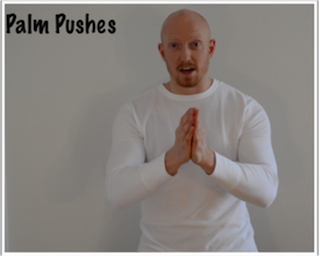 This is a guest post from Todd Kuslikis of AShotofAdrenaline.net.
This is a guest post from Todd Kuslikis of AShotofAdrenaline.net.
Warning: Some of you are about to think I’m crazy. For those of you who haven’t heard of isometrics, this strength building concept is going to make you think I’ve officially walked off the deep end. Functional strength and awesome muscle mass gains with out even moving? This must be some kind of joke, right?
It’s not. Let’s do a little experiment. Stop what you’re doing for a second, sit up straight and bring your palms together, fingers pointing out, about 12 inches away from you. Now press them together as hard as you can. Breathe. Breathe more. A little more. And…. stop.
How do you feel? Arms and pecs a little tired? They should be. You’ve just had your first introduction to “Palm Pushes”, an isometric exercise. If you’re used to more conventional, dynamic strength training techniques, you might still be feeling a little confused. How did you manage to create so much engagement without moving a muscle?
It’s elementary functional anatomy, dear Watson. When you exert force on a muscle, it has to adapt in some way. If you think about it, this is the foundation of strength training. By forcing the muscle to adapt to new challenges, we encourage it to grow stronger in preparedness to meet those challenges.
There’s more than one way for the muscles to adapt, however. Pull out your rusty high school Greek for a second, and let’s define some terms. In an isotonic contraction, the contraction strength (the tone of “tonic”) stays the same (“iso”), and the length changes. This is the kind of muscle movement we’re familiar with. Isotonic contractions are how we do all those little things that require lengthening and shortening muscles, like walking and picking up objects. You know, small stuff.
Isometric contractions, however, may seem a little more confusing. How do we contract muscles without moving them or changing their length? Think back to the exercise at the beginning. Because the hands were pressing together, the muscle length couldn’t change. There was nowhere for it to go! Here the contraction strength changes, while the length (“metric”) stays the same. We use this every day without thinking about it, for stuff like… standing erect. It’s the tone changes in our muscles that keep us constantly adapting to surroundings so we can defeat the demands of gravity.
Isometric exercises take advantage of these tone contractions to build strength. Believe it or not, they’re in some cases even more effective than dynamic exercises. You really can build strength without even moving. In one nine-week study, participants got a little lopsided, working one set of quadriceps with isometrics, and the other with a dynamic workout. While both legs had a similar increase in dynamic strength, the isometrically trained leg had a significantly higher increase in isometric strength. Isometrics are two-for-the-price of one.
How is this possible? Isometric training goes full-throttle, working muscles at their maximum and for extended periods of time. Dynamic exercises, on the other hand, produce force only for split seconds before velocity and acceleration take over. Because intramuscular tension is greater and held for longer than in dynamic exercises, isometric training achieves unique results.
The “father of plyometrics,” Dr. Yuri Verkhoshansky, supposed that a six second isometric contraction is equivalent to numerous dynamic contractions. When you stop to think about it, it makes a lot of sense. More time at maximum tension = greater rate of strength increase. It’s like Dr. Spock logical. Adding 10-20 seconds of intramuscular tension per session, then, can have a surprisingly major effect on strength gains. (Check out this great piece on StrengthNutrition101 for more info).
Isometrics have other fun benefits. Recent studies have shown that these exercises can help lower high blood pressure, for starters. But there’s a whole set of other unique benefits to isometric training that work on a subtler level. Isometrics require us to train our brains, with a whole slew of awesome effects. We’re going to get into a little woo-y new age-y mind-body connection stuff in a minute. Just try to think of it as strength training for your brain, making you smarter and more focused.
On a basic level, these exercises increase our body awareness. In order to perform isometrics, we have to learn how to send messages to specific muscles in the body. It’s easy to tune out a bit in dynamic exercise. No matter how form-conscious we are, everybody’s just switched their brain off for a strength training workout. Bad news: with isometric exercise, that’s no longer possible. Performing these exercises means consciously activating muscles. You’re going to have to think. You’re going to have to use you brain.
Doing isometrics, then, is a little like re-wiring the electrical system of your body. Or better yet, upping the connection speed on the Wi-Fi. You’ll forge and strengthen new neural patterns, cultivating powerful mind-body connections. As our world becomes more and more technology-oriented, we tend to live less and less in our physical bodies. Isometric training brings us back, reconnecting our brains with the incredible tool that is our human form.
Science backs this up. There’s a teeny little side note in this study, that I love because it tells a really revealing story. One of the subjects began the study unable to activate his quadriceps. Couldn’t do it. He’d send the message, and nothing would happen. After completing the study’s isometric program, however, he was able to engage his muscles on command. The isometric training had not only strengthened his muscles, but also cultivated the connection between his brain and his body. Another study used brain MRIs to measure the effects of isometric exercises and found “evidence for strength training-related change in white matter and putamen in the healthy adult brain.” Isometrics changes your brain. That’s some next-generation, sci-fi, Human 2.0 type stuff.
Intense as this sounds, it’s hardly a new concept. Many ancient meditative practices, such as hatha yoga and tai chi, utilized long held isometric exercises to hone the mind. Unlike dynamic exercises, isometrics don’t offer us any distractions. They’re self-confrontational. There’s no escape route, nowhere to hide from your thoughts – a rare situation in our over stimulated, smartphone-ruled day and age. In the stillness of an isometric exercise, unable to distract yourself with movement or check your Facebook, you’re suddenly very alone with yourself. You’re alone with the decision to exit the posture or stay a few more breaths. You’re alone with your thoughts and feelings.
This can be a scary proposition. Over time, however, you can consciously cultivate the same stillness within that isometrics cultivates without. Concentrating on these postures, regulating the breath, we find the mind becoming steady and calm. The stronger this mental state becomes, the stronger we are in the exercise. This mind-body connection creates a continual loop, with the mind growing stronger with the body, and vice-versa. The result is a calm, stable mental state that allows us to live a little less reactively and a little more intentionally. And while all that sounds like hippie-speak, it can actually have major positive effects on your life.
Okay, enough talk. Time for some action. You have lots of good incentive to get started. I’ve included a little taster isometrics workout for you below. Remember: these exercises are just a sample, and barely scratch the surface of the wide, varied, interesting world of isometric training. Start here… then explore!
A few tips before you begin:
1. Go full out. Make each contraction as tight as possible, no excuses. A 2002 study had two groups of subjects practice isometric exercises, one at 100% maximum voluntary isometric contractions, and the other at 60%. While both groups had significant gains in muscle volume, the 100% group saw much higher gains than the 60% group. So go big, or go home.
(The only exception to this is if you have high blood pressure. While isometric exercises have been shown to lower blood pressure, exercising at a high level of intensity can cause dramatic increase in blood pressure. If you have high blood pressure, work at a lower intensity – you’ll still see results!)
2. Work smart. Depending on what your goals are, you’ll want to use these exercises in different ways. According to Dr. David Williams, a “higher number of contractions increases strength, while holding contractions longer increases muscle mass.” If you’re looking to bulk up, long holds are the way to go!
3. Keep it active. While long held, passive isometrics can build strength, your training will be more effective if you choose active isometrics. Active isometrics exert force to fatigue the muscle, which helps “develop muscle and strength much quicker than passive isometrics, such as holds and stances,”according to physical culturalist Jarell Lindsey. Pressing into the ground or the wall can up the ante on passive isometrics. In the exercise shown below, for example, really digging your heels into the ground is essential.
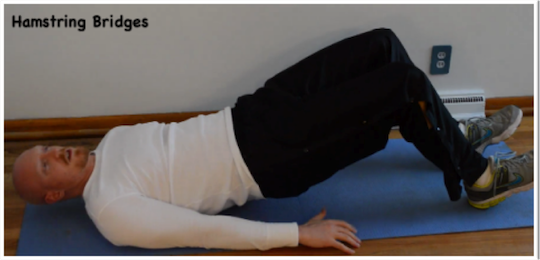
4. Breathe. Seriously. There are several ways you can approach the breath. The most important thing is to keep it steady, full, and unstrained. If you don’t know where to start, take a cue from some people who know a thing or two about breathing – yoga people. Vinyasa styles of yoga often cultivate a “breath with sound,” frequently called ujjayi breathing or ocean breath. Take even inhales and exhales through the nose, letting them rush through the back of the throat to create a sound like ocean waves (or Darth Vader). Five breaths will be around 30 seconds. Concentrating on the breath in this way not only keeps you safe throughout your workout, it also helps cultivate a strong, steady mind. General rule of thumb: When you’ve stopped breathing, you’ve gone too far.
The Workout
Wall Pushes: Get in a low lunge position and place your hands on the wall at about chest level. Lean into the wall and push with all of your strength. If you slide backwards you may need to put on shoes with a good grip. It’s very important to push as hard as you can in order to fatigue the muscle. Hold time: Complete 2-3 repetitions, holding for 30 seconds or longer, resting for 45-60 seconds between reps.
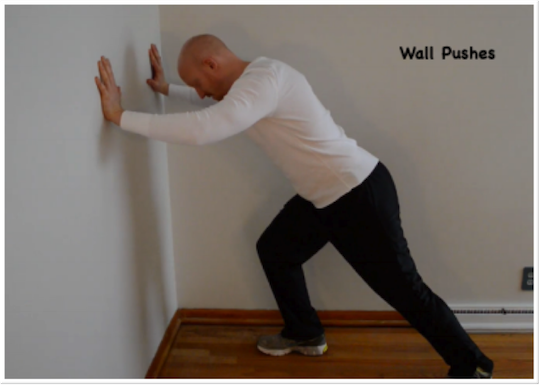
Gun Show: Bring your arms to a 45-degree angle. Imagine your biceps getting tighter and tighter as you breath in. After you complete position one, move to the next position, bringing the arms higher as shown in the picture. Tighten as much as you can, then relax. Move on to the third position, tighten as much as possible, and relax. Hold time: Move with the breath, holding each position for one long inhale and moving to the next as you exhale. Repeat 2-3 times, resting for 20-30 seconds between sets.
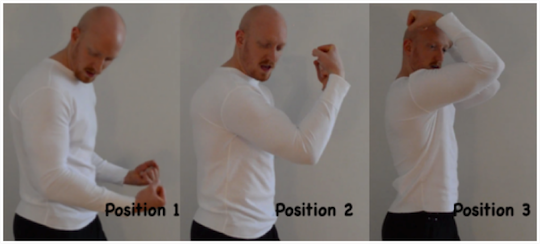
Wall Extensions: Stand with your back toward the wall. Bend over at the waist and place the outer edges of your fist (on both hands) against the wall. Push with all your strength against the wall. You’ll notice your tricep muscles fully engage. Hold time: Complete 2-3 repetitions, holding for 30 seconds or longer, resting for 45-60 seconds between reps.
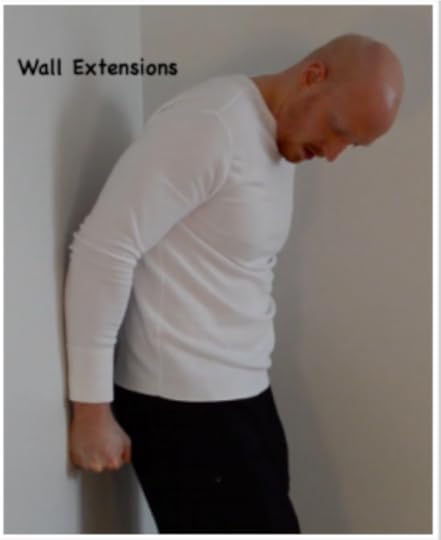
Field Goal Pushes: Stand about 1-2 inches away from a wall facing outward. Raise your arms up so they are parallel with the floor. Place your elbows in a 90 degree angle. Your arms should look like a field goal. Push your elbows and forearms into the wall as hard as you can. You should feel this in the middle of your back – if you don’t, try placing the arms perpendicular to the floor, as pictured below. Hold time: Complete 2-3 repetitions, holding for 30 seconds or longer, resting for 45-60 seconds between reps.
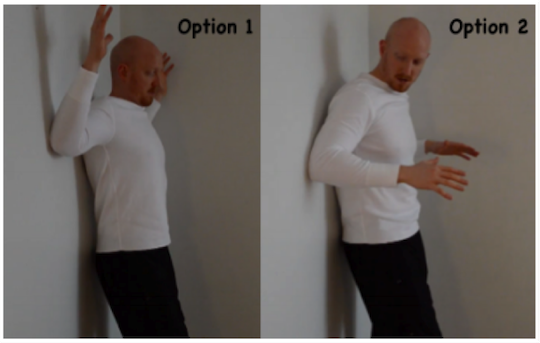
Basic Abdominal Isometric (“The Triangle”): Massive core muscle engagement, while “just sitting there.” Imagine a triangle made by your floating ribs and the spot just beneath your navel. Sitting on the floor, spine straight, exhale to draw the floating ribs towards the spine and activate the lower abdominals. As you inhale, maintain the activation of this triangle, keeping the shoulders down as the rib cage and expands. Hold time: Complete 2-3 repetitions, holding for 30 seconds or longer, resting for 45-60 seconds between reps. Try growing the length of the hold overtime, eventually completing one repetition of 2-5 minutes (build this slowly).
Turtle Crunch: This unique isometric ab exercise is an extreme activation of the triangle. If you couldn’t quite figure out the triangle before, you definitely will after experiencing this. Position yourself on the floor face down in a fetal position. Your arms cross in front of you and rest against your knees and thighs. Use your abs to curl your upper body into your thighs while using your arms as a point of resistance. Hold time: Push as hard as you can for 30 seconds or longer. Complete 2-3 repetitions, resting for 45-60 seconds between reps.
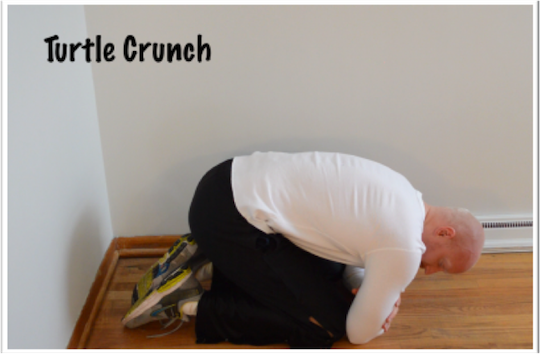
Plank: You’re probably at least a little familiar with this one. Place the hands under the shoulders, and extend the legs behind you, so you’re flat like a board, shoulders, hips, knees, and ankles in one line. Now make it active, pressing back through the feet, reaching the chest forward, and engaging “the triangle.” Breathe! Hold time: Aim for at least a minute. Repeat 2-3 times, resting for 45-60 seconds between reps.
Pushup Hold: From plank position, exhale into a pushup, keeping the elbows in and the gaze forward. Don’t forget to continue engaging that triangle! If you feel any discomfort in your low back, you’ve lost our abdominal support, and it’s time to back out. Hold time: Aim for at least 30 seconds. Repeat 2-3 times, resting for 45-60 seconds between reps.
Wall Sit: Stand with your back against the wall, feet hip-width apart. Bend your knees, bringing your thighs parallel to the ground. Avoid leaning forward – keep your core engaged and your sternum lifted. Press down through your heels into the ground and try to squeeze your feet together, engaging your inner thighs. Hold time: Aim for at least 30 seconds. Repeat 2-3 times, resting for 45-60 seconds between reps.
Check out Todd’s bodyweight exercise blog, AShotofAdrenaline.net.




August 3, 2015
Dear Mark: Fasting Issues, Pullup Neck Pain, and Red Palm Oil
 For today’s edition of Dear Mark, I’m answering three questions. The first one comes from Neda, who’s experiencing some issues that may be related to her fasting schedule. How should she modify her fasting? Or should she eliminate it altogether? The second question concerns a common issue: neck pain during pullups. Why does it happen and how can we avoid it? And finally, what’s the deal with red palm oil? I give my take on the controversial oil, drawing on randomized controlled trials and personal feelings about orangutans to arrive at my conclusion.
For today’s edition of Dear Mark, I’m answering three questions. The first one comes from Neda, who’s experiencing some issues that may be related to her fasting schedule. How should she modify her fasting? Or should she eliminate it altogether? The second question concerns a common issue: neck pain during pullups. Why does it happen and how can we avoid it? And finally, what’s the deal with red palm oil? I give my take on the controversial oil, drawing on randomized controlled trials and personal feelings about orangutans to arrive at my conclusion.
Let’s go:
I have recently tightened up my fasting. I eat an orange or a grapefruit around 1230 or 1ish in the afternoon. Then at 3 I drink coconut water with 2 scoops of whey, chia seeds, matcha powder and green powder and strangely enough I feel tired afterwards. I start to eat my salad and my remaining meal starting at 5 and ending at 9 most of the time.
Why do you think my energy drops with that drink? Is there something you would recommend?
I am a female by the way, thought you should know because I agree long fasting periods I do not think are great for women.
Thank you so much for all of your help,
Neda
As you say, women tend not to feel as well with long fasting periods. Fasting at all is more likely to be dicey, to be quite honest. I’ll mention a few possible paths to take.
Keep fasting, but eat more substantially than your current setup has you eating. At about 65 calories, neither orange or a grapefruit really count as “breaking your fast.” So you’re effectively fasting from 9 PM to 3 PM — 18 full hours. And even then, the meal with which you break your fast isn’t really a meal either. Coconut water, whey, chia seeds, matcha powder, green powder? There’s a bit of protein but almost no fat, and the last two ingredients have basically no calories at all. One could even say that you’re fasting from 9 PM to 5 PM — 20 full hours.
A 20 hour fast is a big undertaking for most people. It’s an even bigger undertaking for the average woman. You’re doing that every single day. Instead, break your fast for real — with a solid meal with food that fills you up. Add a few eggs, some sauteéd veggies, and maybe a sweet potato to your fruit. Just something substantial.
Keep fasting, but not so frequently. Instead of fasting like you are every single day, do it once a week at most. Only increase the frequency if your symptoms abate. And even if they abate, consider just sticking with the single fast per week.
Stop fasting. This may be a stretch, but a recent paper showed that in diabetics, fasting until noon increases the blood glucose response to food by inhibiting the normal insulin response. One common symptom of hyperglycemia is sleepiness. Now, diabetics aren’t a different species of human. Non-diabetics likely have similar responses to fasting, just more tempered. Given the length and relative intensity of your fasting, however, this might explain it.
And as always, make sure you fulfill the “prereqs” for effective and healthy fasting if you intend to keep at it:
1. Have a strong handle on your stress — and your response to stressors. If it’s crunchtime at work, intermittent fasting may be too much of an additional stressor to be effective.
2. Don’t overtrain. I’m not sure how much you’re exercising, but regular fasting seems to work best with lower volume exercise. Low rep strength training? Sure, great. Walking? Go for it. The occasional sprint? Right after you. But Daily CrossFit WODs? Probably not a good idea if you’re eating so little and so infrequently.
3. Don’t be pregnant.
4. Be careful if diabetic. Consider the paper mentioned above finding that diabetics who fasted until noon experienced an exaggerated blood glucose response to food via inhibition of normal insulin signaling.
Dear Mark,
After finding Mark’s Daily Apple a few years ago, and learning how great chin-ups and pull-ups are for health and strength training, I started doing them 3 times a week. I started with 3 sets of 3, with one minute of rest between each set, and worked up to 3 sets of 10.
This has been great for strengthening and defining my muscles, but after a few months, I always get to a point where it starts giving me pretty bad neck pain. Not during the exercise, but it’ll creep up slowly the next day, and it’s not severe — until I wake up up the next morning, when the pain is bad enough that just rolling over or sitting up in bed is really hard. It’s better once I’m up for the day, but it still hurts, and this lasts for 2 or 3 days before resolving on its own. And then I give up on the chin-ups/pull-ups for a few months to avoid the pain.
There must be something wrong with my form or technique or something, right? I do feel like my neck is tense while doing the chin-ups and pull-ups, but I don’t see how to avoid that. It’s exercise, the whole point is that it’s supposed to be hard, to stress the body, etc. So the last rep or 2 in each set is always tough, and I do feel tense. So what can I do? Have you heard of this before?
Thanks,
Anthony
I’ve had the same exact thing happen to me, Anthony. And every single time, going back through my pullup workouts reveals a consistent mistake: I let my technique suffer and my form degrade, and I lead with my chin. It happens to the best of us.
The chin reach is the most common pullup form degradation. I blame the way the pullup is commonly presented. “Chin over the bar!” It’s an innocent cue, but it can cause those who follow it to lead with their chins. Try that, right now, as you read these words.
Jut your chin up.
What just happened? Your neutral spine, starting at your tailbone and running up along your lumbar and thoracic spine to embed itself in your brain stem, broke. If you’re going to lift anything — barbell, heavy rock, your own bodyweight as you hang from a bar — you need to maintain a neutral spine. Heck, nearly every athletic movement whether it’s running, jumping, or swimming flows more smoothly and safely when the entire spine is in the neutral position. If we can’t always achieve it, we at least attempt to. Failing to do so compromises the safety of the movement.
That urge to get the chin over can be persistent. Heck, I still sometimes catch myself jutting that chin upward even though I know better and tell myself every pullup workout not to do it. And yes, I sometimes end up paying for it with a stiff neck. That’s why I’ve come up with a few workarounds to prevent this from happening.
Do neutral grip pullups (palms facing each other) with two parallel overhead bars. This also has the benefit of placing the shoulders into a more stable position.
Do ring pullups. Grab a set of rings and throw them over any overhead horizontal support. You can even take them to the gym if yours doesn’t have rings.
Use “chest to bar” as a cue. In my experience, thinking “chest to bar” actually promotes a more neutral spine and head position by taking the chin out of the equation. Plus, touching chest to bar makes for an even better training effect (greater range of motion).
Make sure your thoracic spine and shoulder regions are moving smoothly and healthfully, too.
Oh, and one last thing: film yourself doing pullups. It may not feel like you’re jutting the chin, but you won’t know for sure until you watch yourself.
Good luck!
Hi Mark…
I’ve heard mixed things about red palm oil & note that Thrive Market sells fair trade, sustainably grown red palm oil. What’s the verdict? I searched your site and nothing came up.
Thank you for all the info you post and for the tip on Thrive Market. Appreciate it!
Best wishes,
Cindy
Red palm oil? I’ve been a big fan for years. Red palm oil is closer to extra virgin olive oil than other “vegetable oils”; the extraction process is fairly gentle, as the palm fruit is fatty and requires only mechanical pressing to get the oil. Compared to any other fat, red palm oil is extremely nutrient dense — rich in beta-carotene, vitamin E, CoQ10, vitamin K1, and other antioxidants.
Compared to all other vegetable sources of vitamin A, red palm oil has the most bioavailablity — it converts to retinol at the greatest rate. And when you cook leafy greens in red palm oil, you absorb more of their beta-carotene.
A number of studies, mostly in animals, shows the protective potential of red palm oil.
In mice given a diet designed to cause heart attacks, adding red palm oil reduces the size of the attacks.
Compared to sunflower oil, red palm oil increases HDL.
Red palm oil protects against atherosclerosis in animal models.
Nutritionally, it checks out. But what about one of the biggest concerns people have with palm oil — the sustainability issue? Most refined palm oil (the kind used in processed food) hails from Indonesia, one of the few remaining homelands of the orangutan. The palm plantations are in direct conflict with the jungles the orangutan calls home. As usually happens, industry wins out and the orangutans lose (and die). So, yeah: it’s messed up stuff. Google Image search for orangutans and palm oil for truly tragic, unsettling imagery.
The orangutan has probably always been my favorite great ape. Ever since I read Poe’s “The Murders in the Rue Morgue,” I’ve had a mild obsession with the orangutan. The wiry power in those spindly arms, the massive flanges on the males’ faces (a marker of high testosterone), the way they can condense into compact orange hairy lazy balls that unfold into enormous ranging hominids, their languid repose in towering trees looking about as comfortable as a human on a couch.
So whenever I you do buy red palm oil, make sure it comes from orangutan-friendly plantations. Nutiva makes a good one that comes from Ecuadorian palms. Trader Joe’s just started carrying one. Another orangutan-friendly area to look out for is West Africa (Nigeria and Ghana make good red palm oil).
That’s about it for this week, everyone! Thanks for reading and be sure to write down below with any additional input or commentary!




August 2, 2015
Weekend Link Love – Edition 359

Research of the Week
There is no connection between salt intake and heart disease or overall mortality in healthy older adults.
A single night of sleep deprivation can have lasting effects on circadian-related genes that control metabolism in men (PDF).
According to a recent review, low intensity radiofrequency radiation (emitted by devices such as smart phones) appears to “induce oxidative effects in biological systems.”
Supplementation with mammalian omega-3s (seal oil) improved athletes’ neuromuscular function and performance.
In overweight postmenopausal women, high-fat meals (with either meat or cheese as the source of fat) appear to be less atherogenic than low-fat, high-carb meals.
New Primal Blueprint Podcasts

Episode 78: Tovar Cerulli: A former vegan, Tovar is now a “mindful carnivore” teaching others the importance of conservation and highlighting the ways in which hunting, meat-eating, and wildlife protection coalesce. He’s also the author of a new book — The Mindful Carnivore: A Vegetarian’s Hunt for Sustenance — earning praise from hunters, vegetarians, and ecologists.
Each week, select Mark’s Daily Apple blog posts are prepared as Primal Blueprint Podcasts. Need to catch up on reading, but don’t have the time? Prefer to listen to articles while on the go? Check out the new blog post podcasts below, and subscribe to the Primal Blueprint Podcast here so you never miss an episode.
Great Expectations: Why Good Health is Awesome (but not a Panacea)
The Best Kind of Health Insurance
Primal Kitchen Restaurants: Coming to a Town Near You? (With Your Help, Yes.)
Also, be sure to check out and subscribe to the (relatively) brand new Primal Endurance Podcast.
Weekly sweepstakes: Write a review for The Primal Blueprint Podcast or The Primal Endurance Podcast on iTunes and submit this form for a chance to win a Primal prize package. One new winner is chosen every week!
Interesting Blog Posts
How banana starch (a source of resistant starch) can help both lean and obese alike improve their postprandial and 48-hour blood sugar and insulin levels.
Tree climbing can boost memory.
Media, Schmedia
Many commercial almond milks are only 2% actual almond.
There’s a new guide to wine/insect pairing.
Everything Else
A nice interview with Gary Taubes just went up over at Carb-Free Nation.
Want to power clean correctly (plus gain a better understanding of what power actually means)? Learn from Mark Rippetoe.
I sure am glad I won’t be participating in the triathlon next Olympics.
A Swedish family went all organic for two weeks and cleared out almost all traces of pesticides in their urine samples.
Can’t seem to meditate? Try coloring.
How to experience the “deep, mystical sleep of our ancestors.”
Recipe Corner
Spicy cajun sweet potato mash.
This Thai red curry is extremely solid.
Time Capsule
One year ago (Aug 4 – Aug 10)
What Difference Can Being Present Make? – A big one.
Why the Omega-3/Omega-6 Ratio May Not Matter After All — A revisiting of an old concept.
Comment of the Week
I AM WORKING WITH THE SENIORS IN SENIOR VILLAGE ON…
GET THIS..
“15 WAYS TO GET UP OFF THE FLOOR SO YOU DONT NEED LIFE ALERT!” ….using furniture…nothing and ways to get to something to help you up…such as belly crawls and log rolls, and keeping and using items such as brooms, canes or umbrellas to reach for the phone….amongst other ideas we all think of whilst at it….incorporate this in your plan….old folks NEVER PRACTICE …GETTIN UP OFF THE FLOOR…GOTTA LOVE IT!!!
THEY LOVE IT!!
PEACE AND BEST REGARDS…PAPA GROK
– Always a treat to hear from the Unconquerable Dave.




August 1, 2015
Coconut Fish Soup with Red Palm Oil
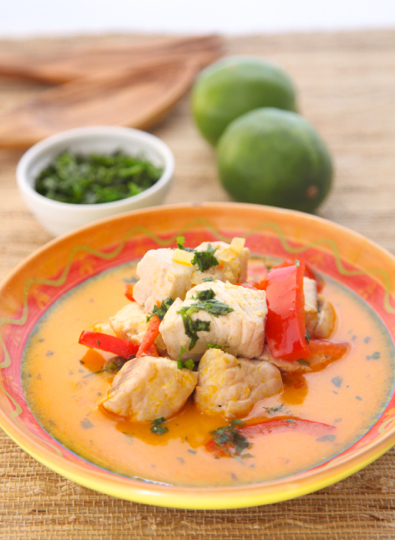
This gorgeous fish soup is quick and easy to make, rich in flavor, and filled with healthy fats. It’s also really delicious; a weeknight meal you’ll want to make over and over again But the real reason to check out this recipe is that it’s a perfect example of how (and why) you should cook with unrefined red palm oil.
Unrefined red palm oil is incredibly dense with antioxidants and vitamins. Full-spectrum Vitamin E, co-enzyme Q10, betacarotenes, vitamin A, and vitamin K…they’re all there in abundance. There’s no secret to cooking with red palm oil, just use it in the same way that you use coconut oil, butter or olive oil. Sauté anything in red palm oil (meat, seafood, veggies, eggs), use palm oil to roast vegetables, or add it to soups or stews.
In this recipe, red palm oil is added at the end to give the soup broth an incredibly rich, velvety texture. But what about the flavor, you ask? It’s true that the strong flavor of unrefined red palm oil can take some getting use to. If you find it off-putting, then look for brands like Nutiva (our favorite) that put the oil through a cold-filtration process that mellows the flavor considerably. Nutiva’s unrefined red palm oil has such a mild flavor that it’s barely even noticeable.
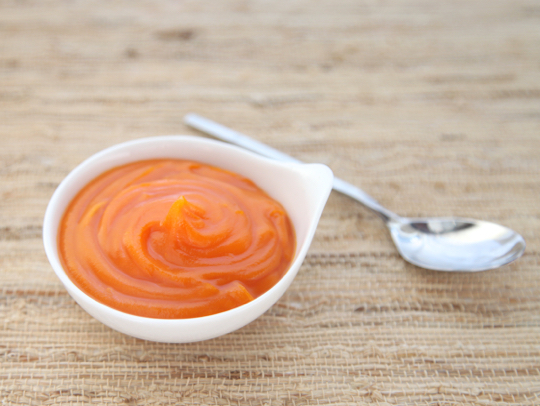
Whichever brand you buy make sure it’s unrefined red palm oil, which delivers the most nutrients. To insure that your purchase of palm oil is not harmful to wildlife and does not contribute to deforestation or habitat destruction, look for brands that are orangutan-safe and habitat friendly.
This coconut fish soup with red palm oil is really great when made with firm-fleshed white fish (like halibut), but can also be made with salmon, shrimp or mussels.
Servings: 4
Time in the Kitchen: 45 minutes
Ingredients:
1 ½ pounds boneless, skinless fish, cut into 2-inch pieces (680 g/5 cm)
½ teaspoon kosher salt (2.5 ml)
Juice from 2 limes (about ¼ cup) (60 ml)
2 tablespoons coconut oil (30 ml)
6 garlic cloves, finely chopped
1 small onion, finely chopped
2 red bell peppers, thinly sliced
2 plum tomatoes, cored and chopped
1 cup fish or chicken stock (240 ml)
1 13.5 fl oz can full-fat coconut milk (400 ml)
2 tablespoons unrefined red palm oil (30 ml)
¼ cup finely chopped cilantro (60 ml)
Instructions:
In a large bowl, season the fish with salt and pour the lime juice on top. Set aside.
Heat coconut oil over medium heat in a deep pot or Dutch oven. Add garlic and onion. Sauté until onion is soft, 5 minutes.
Add bell pepper and tomatoes. Cook 5 minutes, then add the stock, coconut milk and palm oil. Bring to a boil, then add the fish and lime juice.
Simmer until fish is cooked through, about 6 minutes. Add salt to taste and top with cilantro.
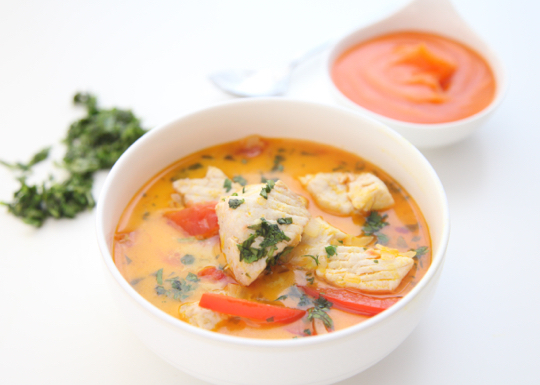
Not Sure What to Eat? Get the Primal Blueprint Meal Plan for Shopping Lists and Recipes Delivered Directly to Your Inbox Each Week. Now Available as an App!



July 31, 2015
Positively Primal: A Merry Makeover
It’s Friday, everyone! And that means another Primal Blueprint Real Life Story from a Mark’s Daily Apple reader. If you have your own success story and would like to share it with me and the Mark’s Daily Apple community please contact me here. I’ll continue to publish these each Friday as long as they keep coming in. Thank you for reading!
 Flash back to 2012: we felt sick every day, counted calories religiously, felt guilty after eating any kind of food…we were fueled by low self-esteem and disorderly eating.
Flash back to 2012: we felt sick every day, counted calories religiously, felt guilty after eating any kind of food…we were fueled by low self-esteem and disorderly eating.
We’d both just completed a 12 week diet and exercise plan—not designed for health, but designed to lose weight. We reached our goal weights (aka stick thin) BUT along with our “perfect bodies” we were tired, moody, cold all the time and our periods completely stopped. Definitely not healthy and definitely not happy. Which was strange…because we’d always say, “When I weigh XX kilos…THEN I’ll be happy.”
We were in this obsessive whirlwind of dieting: losing weight, putting it back on, losing it again and no matter what, we still believed we were “fat.” Our brains were filled with negativity about ourselves, especially our bodies.
When we looked around at our friends, this seemed completely normal. They were all in this same kind of head space. We all thought we had to be a certain weight and look a certain way to be happy and to “fit in.”
In June 2012, Emma was diagnosed with a gluten intolerance, which was the catalyst for us both to start looking into changing the food we ate.
We began by cutting out all gluten from our diets. This was pretty easy as “gluten-free” packaged foods were the new “it” product. We were eating things like gluten-free bread, rice pasta, rice cakes and corn chips.
Although we thought we’d made positive changes to our diets, we didn’t feel any better. Plus, one month into gluten free living and we were sick of the cardboard crackers.
We googled and read books on different diets and lifestyles like The Primal Blueprint, Sweet Poison, Atkins, The Paleo Solution and the word inflammation stuck out to us. It was consistently presented again and again as one of the main culprits of all illness. We thought, perhaps this was what had been causing our illness?
The very next week our trainer mentioned this “real food” way of eating. An old colleague was raving about his new found energy from eating like the cavemen did and up popped an email about this primal way (In FACT, it was one of Mark’s emails that a friend forwarded!).
So was it that we found primal/paleo, or that it found us? We’ll never know, but we took these as signs from some higher power, the universe, what ever you’d like to call it, that we just had to try it out for ourselves.
We read blogs (Mark’s Daily Apple was and still is our go-to for confirming everything!) and books, printed recipes and did a huge pantry and fridge clean out then restock to begin our primal journey.
It seemed full on. No grains, refined sugars, legumes or gluten! But we had been complete bread and cereal addicts. The thought of breakfast and lunch was causing some real anxiety, since our pre-primal meals included toast, cereals and sandwiches!
We knew it wasn’t going to be an easy transition or a quick fix, but from what we had read and heard, the benefits were going to be worth it. Plus, it just made sense: cut out processed “food-like” items and replace them with real, fresh, good quality produce.
We gave ourselves the goal to follow the primal/paleo lifestyle for a solid three months. If we continued to feel sick, tired and blerr, we’d try something new.
Two weeks in and we had headaches, craved our beloved cereal and we just wanted a darn sandwich!
Four weeks passed and these symptoms had disappeared. We felt different, better.
Eight weeks in and we’d got the hang of the primal way. Spiralising zucchini instead of pasta, grating cauliflower to go with curries and coming up with ways to enjoy a sweet treat every now and then.
When the three months were up we’d never felt and looked better.
We now had high and long lasting energy levels; our thoughts were clear and quick; we both lost around 10kg each; and our skin beamed health! Our hair was shiny, we ditched the 3pm sugar cravings and bloated bellies and felt more at ease…no more nasty mood swings!
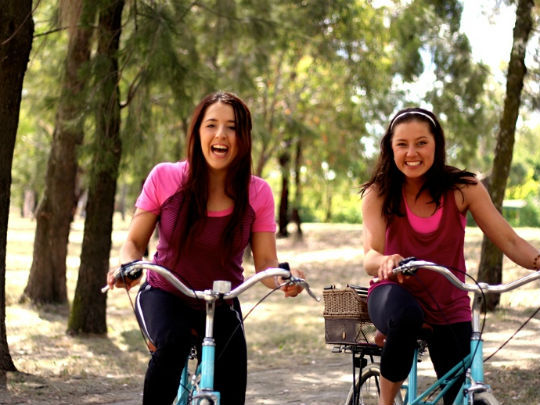
Our new positive relationship with our food is by far the greatest benefit. Long gone are food binges and the guilty feelings that follow afterwards. Instead, we eat when we’re hungry and choose foods that are going to nourish our bodies and make us feel amazing.
We used to be completely controlled by food—stressed and anxious at the thought of meal times. Primal was like a weight off our shoulders. Although there were guidelines, they didn’t feel like restrictions and we sure weren’t counting calories anymore.
Our minds were no longer consumed by food. There was space for more. We soon realized that our corporate, government jobs weren’t enough for us. We had all this new found energy and it was being wasted sitting in a 9-5 soul-sucking job. We were happy people but the situation we found ourselves in was dragging us down. We loathed getting up and out of bed to get in to the office.
We felt so uninspired every day that we resorted back to our old eating habits. Not processed foods but binging. We were taking anything and everything on the “yes list” and going overboard with it. We would overeat until we felt sick.
We would create “healthy sweet treats” and eat the entire treat in a couple of days!
We’d consume up to a kilo of nuts between us sometime, and would eat sweet potato chippies every day. Our portions became bigger and bigger, including the amount of meat we were consuming.
Slowly but surely, the brain fog crept back in, we gained back the weight we’d lost and we were feeling tired and grumpy all the time again. Although the foods we had been eating were primal “yes” items, our bodies simply didn’t need that much food.
We started studying with the Institute for Integrative Nutrition and quickly realized that it wasn’t just food and movement that played a part in our overall health and happiness. Aspects of our lives like our career, relationships and spirituality all played huge parts too.
We made the decision to move our focus from food to these other three aspects to help us live better, healthier, happier lives.
Our career was a big one for us. We were forever negatively thinking and talking about our corporate jobs that we hated. We were passionate to find something more.
We were also surrounded by negative relationships, so we decided to put a major focus on detoxing the negative relationships and welcoming positive amazing people into our lives. Yes, we now have less people in our lives, but we truly believe it’s quality over quantity. When we surround ourselves with people who give good energy rather than take, our world transforms.
We started sharing our primal creations to our personal Instagram accounts and we were overwhelmed with people who were really interested in what we were up to! They kept asking how we made something so delicious without using sugar, grains, and gluten!
This got us so excited…we had this super passion for primal living and others wanted to know about it. And we wanted to share it! We wanted others to feel as good as we were feeling.
So we googled: “how to start a blog?” followed by “what is a blog?”
From there, we started our business, The Merrymaker Sisters. This is our site that inspires hundreds of thousands with real primal food recipes. It shows our followers how to find and follow their bliss (bliss = their passion/dream).
We quickly realized that merrymaking was OUR BLISS…and so, we had to follow it. It took us about a year and a half of merrymaking part time until we quit our government jobs—to take a HUGE risk and try to make a living from something we loved doing.
At this point in our journey, we also discovered meditation and we truly fell in love with the benefits of sitting and just being. We realized how much we had to be grateful for and how every thought that goes on in our head can either negatively or positively affect our lives. When we think positive, kind, loving thoughts, that’s what we receive back. When we do the opposite, well, then, the opposite happens.
We asked ourselves: what is the bigger risk? Having a go at something we love and failing? Or being stuck in a job we absolutely hate for the next 50 years…looking back and thinking…what if? So we just did it! We quit our jobs to merrymake fulltime!
We believe what has allowed us to turn this in to a successful business is having the mentality to keep taking small step after small step…it’s all about taking action!
When we first started living primal, we never could imagine that a blog could turn into our fulltime careers. From sick government corporate workers, to bloggers, to full time business owners…and now? Authors!
We’ve just launched our brand new book: Make It Merry: A Healthy Cookbook, which has over 70 nutritious, primal, quick-and-easy recipes.
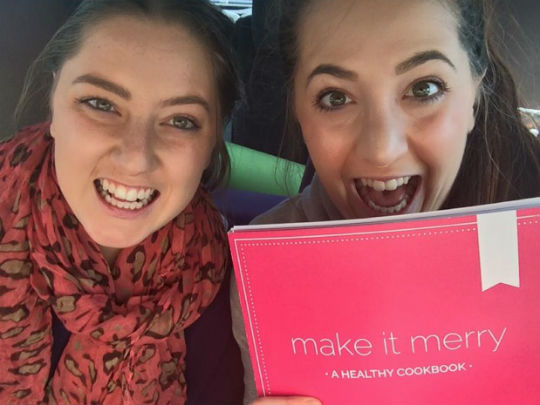
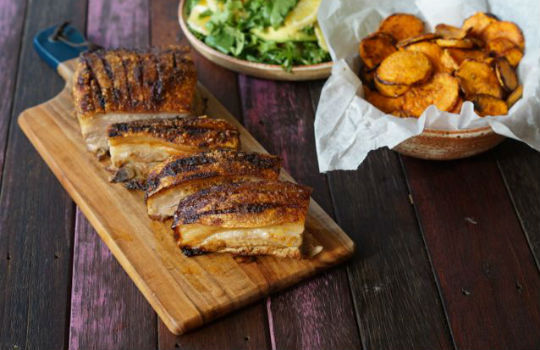
We sent our book to Mark and Carrie last week (they’ve been huge inspirations for our business) and we were so overwhelmed with the feedback they gave us:
“Charming and refreshing—just like the Merrymaker Sisters themselves. We both loved the book’s lively layout and tableside photography. Not to mention, it’s full of tasty, one-of-a-kind primal-approved treats. Coconut and macadamia nut crusted salmon? Sign us up!”
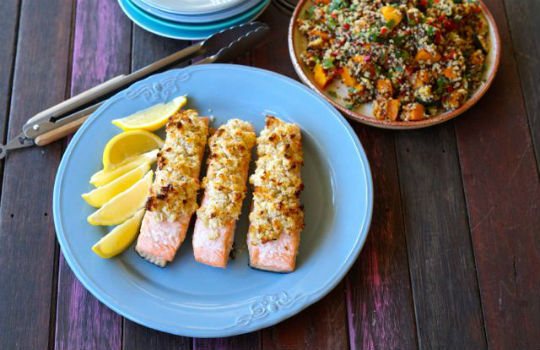

Primal living was the catalyst that changed our whole lives. We found a way to live that made us feel amazing, inside and out, and we found our bliss, our passion.
When we used to think about “health,” we’d think about losing weight, eating less and doing more exercise.
 Thanks to primal living, we now believe it’s not a journey to health, it’s a journey of our best health. Our favorite message to send out to the world is: do what works for you and what makes you feel good.
Thanks to primal living, we now believe it’s not a journey to health, it’s a journey of our best health. Our favorite message to send out to the world is: do what works for you and what makes you feel good.
So if you’re thinking of changing your diet, or thinking of going for a new job, leaving your partner, asking someone out on a date…then just do it! Because if you’re thinking about it, then it’s important! This. Is. It. Our one life to do what works for us and what makes us feel good. We all deserve to feel amazing, healthy, energized and we all deserve to find our passion and have the opportunity to follow it.
Emma and Carla Papas




July 30, 2015
Great Expectations: Why Good Health Is Awesome (but Not a Panacea)
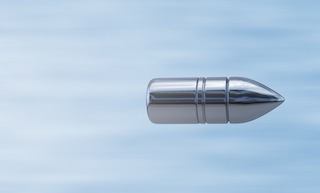 How often do we bemoan people’s lack of expectations around their health? Their passivity. Their inertia. Their apathy. (Perhaps our own.) They just don’t seem to care or even expect that good health would offer them enough to justify the effort. I can feel heads shaking out there. Personally, I don’t get it either.
How often do we bemoan people’s lack of expectations around their health? Their passivity. Their inertia. Their apathy. (Perhaps our own.) They just don’t seem to care or even expect that good health would offer them enough to justify the effort. I can feel heads shaking out there. Personally, I don’t get it either.
On the other hand, there are those people who hold good health on all encompassing pedestals. Maybe you know a few – or have identified as one yourself at some point. They’re the folks who believe that if they can only lose X pounds or get into great shape or achieve washboard abs that everything else in life will finally come together. They’d finally be happy, successful and otherwise “worthy.” And their thinking becomes a distortion that tells them they flat-out can’t be those things until they’ve achieved their physical end goals (as if there is such a thing). As odd as it might sound to some, I can’t tell you how many people I’ve seen latch onto this panacea principle.
I get it – why this discrepancy between expectation and reality. Is it much wonder people glom onto this notion when you consider how healthy, fit, athletic-looking people are often portrayed? It isn’t only that they’re active or doing exciting things in all the ads and entertainment news features. It’s that they supposedly have everything together. It’s suggested they have high-paying jobs with big titles. They have huge social circles and great relationships. Their kids do well in school. Can we just cut the bull already and remember what we’re doing here?
Let me back up and say that taking care of yourself can give you more energy (always a major plus). If your body is in good health, it will serve your hormonal balance and emotional resilience. You’ll likely sleep better and have a better immune response. You’ll be able to do more fun things like kayak or hike or surf for hours. There is almost no end to the benefits of being healthy and what it can do for your overall well-being.
That said, let’s be clear. Getting fit and healthy won’t make you more lovable. You won’t suddenly be showered with good fortune. You won’t be released from all your unhealthy tendencies and personal faults. Bad memories and past indiscretions won’t be carried away by a blue balloon. Insecurities won’t disintegrate. Life won’t suddenly morph into a convivial Miller High Life commercial.
Because the truth is that old mundane phrase – wherever you go, there you are – with all the baggage you came with.
That voice that seventy pounds ago told you were never as impressive as other people around you… That habit of always looking for a comparison between yourself and others… That uncomfortable feeling in crowds or fear of rejection… The propensity to live small and stay invisible… Guess what? They don’t vanish with lost pounds or muscle gained.
Whether it’s losing 20 or 120 pounds, running an endurance event or otherwise transforming your health, none of these accomplishments will give you what’s lacking in your emotional well-being.
This you have to claim from other kinds of work – a speaking back to those internal bogeys time and again. There’s no flip-switch here. Changing your inner environment takes effort in the same way transforming your physical state does. Taking the initiative to make substantive external changes surely can boost your confidence, but it’s still an inner job. Getting real about your health doesn’t preclude you from doing the necessary internal work to get right with your inner self.
The people I’ve seen meet with the most success in health goals are those who can appropriately distinguish their health endeavors from the overall outcome or meaningfulness of their lives. There’s an advantage to not hinging your success in life to a number on the scale or an athletic goal. It’s the difference between letting good health support our ability to go after other visions and expecting our dreams to be met if we achieve a certain fitness measure.
Why would anyone put that much pressure on their health process?
Instead of bringing impossible (i.e. self-defeating) expectations to our workouts and meals and nightly walks, how about we keep it simple? Getting healthy is worth getting healthy – all on its own without the push to fix every problem we perceive or elevate every dimension of our lives.
Gauge your expectations for the sake of your success. Consider the weight loss or fitness goal you’re going for as a positive base to expand from rather than the panacea for all that leaves us less satisfied or connected in our lives.
Thanks for reading, everyone. Let me know your thoughts, and have a good end to your week.




July 29, 2015
The Best Kind of Health Insurance
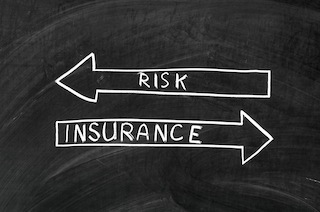 I’m not interested in talking about Supreme Court decisions, the Affordable Health Care Act or for-profit versus non-profit business models. No, today I have something else in mind. It’s a perspective on health insurance that gets almost no attention at all despite the high costs and even higher stakes.
I’m not interested in talking about Supreme Court decisions, the Affordable Health Care Act or for-profit versus non-profit business models. No, today I have something else in mind. It’s a perspective on health insurance that gets almost no attention at all despite the high costs and even higher stakes.
Let’s look at an actual definition first. From Wikipedia: “Health insurance is insurance against the risk of incurring medical expenses among individuals.” And can those darn expenses ever get expensive… Just as budget experts and lifestyle minimalists advise that the best price is no price when that’s an option, I’d argue the same principle applies here. The cheapest health bill is no bill. And what if our daily choices could help make this possible?
Let me back up and say that I’m not arguing anyone should skip purchasing health insurance (especially these days) or that even the most fervently “perfect” Primal lifestyle will ward off any and all mishaps, accidents or illnesses for which you will thank your stars that you have medical insurance. It exists for a number of legitimate reasons after all.
That said, I think we’ve lost some perspective along the way, including from the get-go assuming that we need to be dependent on our health plans because we’ll inevitably end up beset with many of the conditions we’ve come to deem as “normal” parts of life. It’s accepting the unacceptable if you ask me.
Let’s just consider how expensive it is to be sick. Take for instance the fact that 70% of us in this country take at least one pharmaceutical drug. Over 50% take two, and approximately 20% take five or more.
The estimated annual treatment cost of a person who’s been diagnosed with diabetes is $10,970. (Some estimates put that cost at $13,700 – 2.3 times higher than those who don’t have the condition.) Those who have it but haven’t been diagnosed tend to rack up an estimated average bill of $4,030. Even if insurance pays for a good hunk of this expense, you’re looking at a thousand or few thousand dollars out of pocket. I personally can think of more fun ways to use that money.
And run-of-the-mill obesity (that’s how we’ve come to think of it these days)? One study pins the average added medical cost at $2,741 than that typically incurred by a healthy weight person. The fact is, obesity doesn’t just increase the risk of common lifestyle diseases like type 2 diabetes but can also increase expenses related to surgery as well as basic care and prescriptions.
In the grand scheme, I may not be able to prevent every bad thing from happening to my body. I don’t have full influence over what toxins are present in my environment. I can’t go back in time and undo some of the things I subjected my body to for years – or decades. I cannot with utter certainty predict, let alone steer, every genetic misfire. (And, then, there are knee injuries….) But it’s flat-out stunning what I can influence.
Reality check: even by conservative American Cancer Society estimates, one-third of all cancers are caused by poor diet, sedentary lifestyle or obesity. In terms of activity levels and cancer risk, research routinely supports physical fitness as a protective factor against many kinds of cancer.
One study of 2,560 men over the course of seventeen years showed those who engaged in intensive level exercise (e.g. running) for thirty minutes a day had half the rate of cancer-related mortality. The choice to meditate, it appears, can lower the risk for heart attack, stroke and death by 48%.
On the flip side, let’s look at something like sleep. The cost of sleep deprivation – in some cases even getting a regular six to seven hours a night rather than eight hours – raises my risk of coronary artery calcification, type 2 diabetes, hypertension and obesity. I could go on (and do in plenty of other posts), but the key point is this….
How thoroughly married are we in this society to the idea of dependence on our health insurance – as if our insurance is our source of health? How much have we come to believe that our insurance is what will take care of us?
I’d argue that insurance is most appropriately and accurately a tool we can use to maintain financial stability in the face of unknown and unpreventable events. It can be a means of accessing treatments and services (or negotiated lower costs) we wouldn’t otherwise have access to when circumstance necessitates.
So, what is more accurately our source then – for maintaining and protecting our health as anyone can, for staving off the kinds of medical conditions and events that will cost us our physical vitality and our long-term financial security?
This angle brings up some provocative questions. What if we could begin to see our workout time as health insurance? How about healthy food choices like a side of grass-fed beef or a farm share of fresh veggies? What about wise supplementation and an extra 10 minutes in the morning routine to make some eggs? How about hiking boots and climbing equipment (when actually used)?
How about thinking of whatever helps us sleep well as health insurance – from a warm bath at night to a decent mattress to light blocking curtains to the perspective that nudges us to wind down with an evening walk when others are settling in for a few hours of primetime viewing.
And as long as we’re redefining health insurance, how about we throw in the self-discipline that keeps us from justifying stopping at the drive-thru over our lunch hours? What about the self-care commitment that keeps us from overcommitting and burning ourselves out? And the vacations, stay-cations, personal retreats, and other time off well spent? How about the personal research and skeptical if not unconventional thinking that allows us to make the best, albeit not always popular, choices for our well-being?
Can we envision these practices and the commitment behind them as the real foundation of our health care and preservation. And can we then see the consistent maintenance of good health as our primary safeguard against the burden of significant medical outlay? Talk about a different level of accountability…
It begs the question, “What did you do to protect your health today?”
Thanks for reading, everyone. Let me know your thoughts on the issue, and have a great end to your week.
Prefer listening to reading? Get an audio recording of this blog post, and subscribe to the Primal Blueprint Podcast on iTunes for instant access to all past, present and future episodes here.




July 28, 2015
Primal Kitchen Restaurants: Coming to a Town Near You? (With Your Help, Yes.)
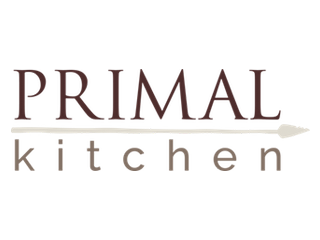 For years, I’ve made the case for a particular way of eating: the Primal Blueprint. Based on nutrient-dense vegetables, fruits, animals, fish, nuts, seeds, tubers, herbs, spices, and fats, it recommends against consumption of a few foods — grains, refined sugar, seed oils, excess carbs — but is overall very inclusive. A person can live and eat very well drawing on the extensive list of recommended foods. Millions of people all over the world have embraced this way of eating and made radically positive transformations of their health without feeling “deprived.”
For years, I’ve made the case for a particular way of eating: the Primal Blueprint. Based on nutrient-dense vegetables, fruits, animals, fish, nuts, seeds, tubers, herbs, spices, and fats, it recommends against consumption of a few foods — grains, refined sugar, seed oils, excess carbs — but is overall very inclusive. A person can live and eat very well drawing on the extensive list of recommended foods. Millions of people all over the world have embraced this way of eating and made radically positive transformations of their health without feeling “deprived.”
Those are the committed ones, though. The ones willing and able to overhaul their kitchens, purge their pantries, and cook every single day. This can be a big sacrifice entailing meal planning, budgeting, and transforming the way you shop for, look at, and think about food. Not everyone is ready to do that. Not everyone has the time. They turn to restaurants, or grab something quick from a cafe or deli. Worse, they hit the drive through.
For almost as many years as I’ve been writing this blog and these books, I’ve also dreamed about providing a very real and concrete outlet for people who want (and need) delicious, nutrient-dense food without always having to make it themselves: a Primal restaurant. As much as this movement has grown, it’s still young, still small. Most people don’t know about it, and although restaurants are making initial overtures with gluten-free buns and lettuce wrapped burgers and salad options, the majority of quick and easy “on the go” options are of terrible quality. It’s easy to complain about the sad state of casual restaurants, but that doesn’t help the people who eat there. I wanted to help them.
But I couldn’t run a restaurant myself, let alone multiple restaurants all over the country. I had a company to lead, books and blogs to write, and friends and family to spend time with. So it remained a fantasy for years. The dreams didn’t go away, but they didn’t come to fruition — until I had a small realization.
I could leverage my knowhow, my connections, and my business instincts to make it easier for other people to open Primal restaurants in other cities. Instead of doing all the work myself — an impossible task — I would create a Primal restaurant platform and franchise it out to others. Not only does this bring delicious food to people desperate for nutrient-dense fare they don’t have to prepare, it opens up business opportunities to Primal enthusiasts who want to marry their passion to their livelihoods. It wins on multiple levels.
I’ve teamed up with Mario Altiery, president of Upside Group Franchise Consulting. Mario grew up in the food industry and is an accomplished chef who has launched multiple successful restaurant franchises. Over the years, he’s developed a system for creating successful restaurants and other businesses that scale to the franchise level. He knows how franchises succeed and how they fail. Together, we form a formidable team. I’ve hinted at it on social media, but today we’re rolling out the official announcement of Primal Kitchen Restaurants.
This isn’t a health food franchise. You won’t be selling cardboard burgers and dry rabbit salads. This is objectively delicious food that the average person won’t know is also good for them, just like how friends and family don’t believe you when you whip up a Primal recipe. I love great food, and I won’t settle for less. Neither should you or your future customers.
Why should you pursue a Primal Kitchen Restaurant franchise?
Because you recognize and want to celebrate the fact that food can be both delicious and nourishing, provided you use quality ingredients, fresh meat and produce. Primal Kitchen Restaurants won’t be hijacking taste buds and appropriating brain reward chemistry to compel food addictions, like processed food manufacturers employ food chemists to do. It will appeal to the the innate desire each of us have to consume nutrient-dense, delicious plants and animals.
Because you’re a firm believer in high-quality, uncompromisingly delicious food. For food to be truly worth your chewing time, it must nourish the soul and the body.
Because you’re sick and tired of what passes for grab-and-go restaurant food in this country. Because you hate seeing kids drinking fountain Coke, eating fries, and gorging on deep fried chicken fingers. People do want high-quality, gourmet food and you want to give it to them.
Because you want to be able to grab a quick bite to eat without breaking the bank or worrying about the quality of the ingredients used to make it — and you know others feel the same way.
Because you’ve been searching for a way to turn this Primal stuff you spend so much time on into a viable business.
Because you believe in the Primal message: that we owe it to ourselves, our health, and our gene expression to eat in accordance with our biology.
If you want to be a part of a restaurant revolution — or even if you just want to provide good food that you can believe in — and you’d like more information on Primal Kitchen Restaurants, fill out this form and you’ll be contacted by a member of our staff with further details.
I’m excited. My entire staff is excited. I can’t wait for the day that I can go to Phoenix for business and get a legitimate Big Ass Salad for lunch. Let’s make that happen!



Mark Sisson's Blog
- Mark Sisson's profile
- 199 followers



